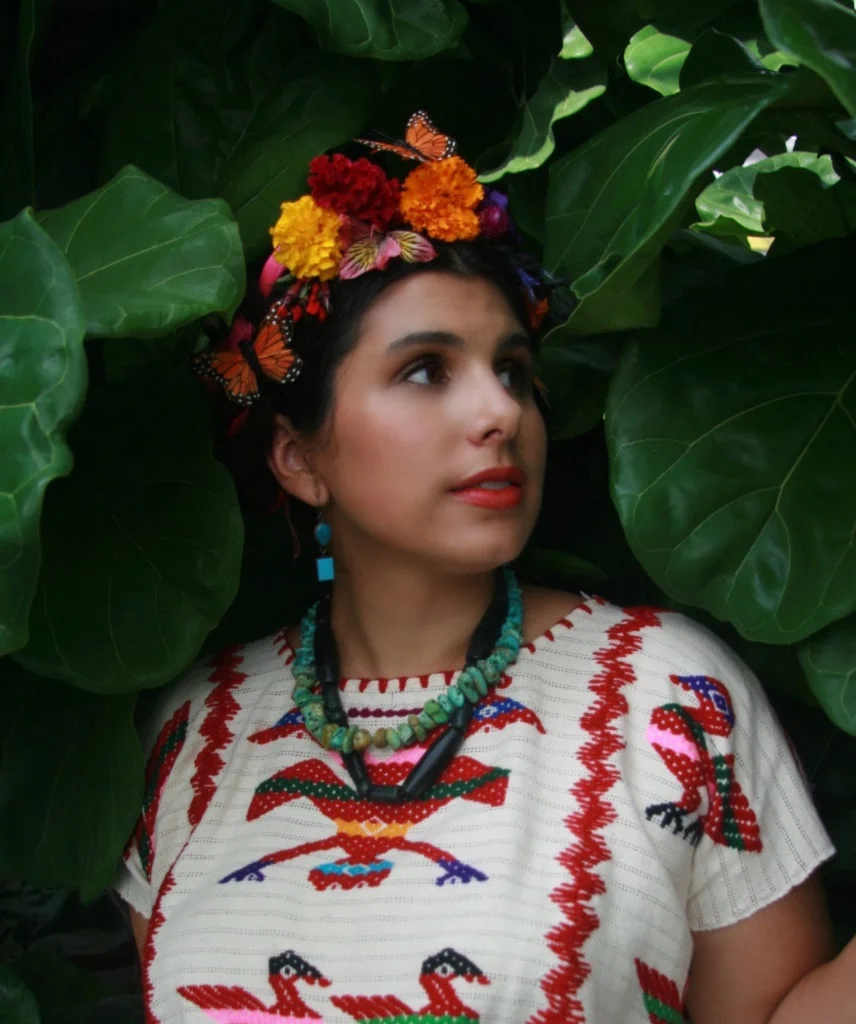
We started the Becoming interview series after reading Michelle Obama’s book Becoming in our book club a few years ago. We wanted to hear from women in different walks of life and how they were approaching creativity, mothering, career goals, and more. It’s been amazing to conduct these interviews and get a “behind the scenes” look of so many inspirational women!
Today’s interviewee is Michelle Franzoni Thorley, an artist that I have been following for quite some time. Michelle draws on her family history and experiences as a Xicana, as well as a love of plants, in her lush, figurative paintings. She’s also a family historian and an anti racism educator who explores the intersections of race, family traditions, family history, and social activism.
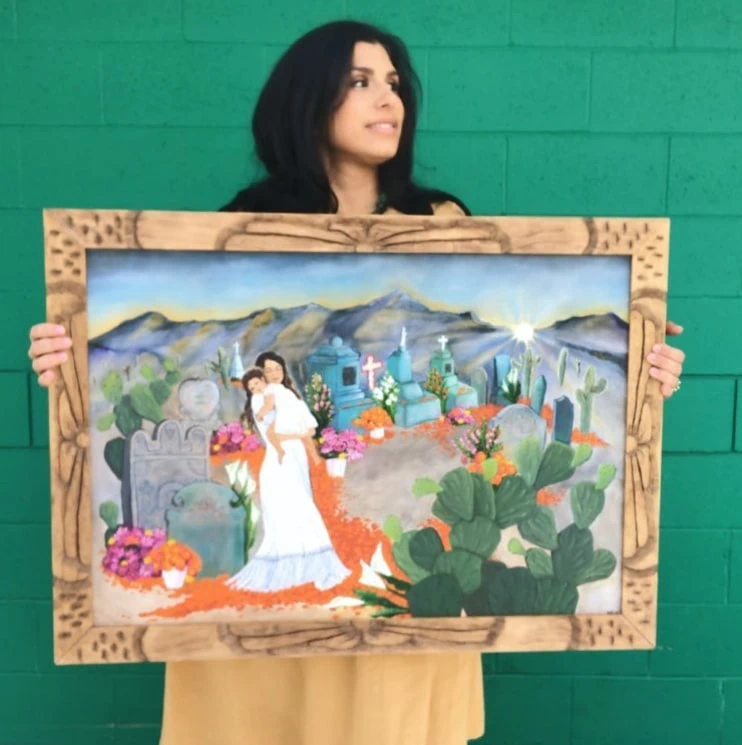
Michelle Franzoni Thorley is a Xicana artist with a mixed ancestry from Europe, Mexico, and Africa. Her work is deeply inspired by her own family history and her great desire to see herself and her mulitracial identity represented in the arts. Franzoni Thorley is a family history enthusiast, visual artist and social media anti racism educator. Her work and words can be found on instagram @florafamiliar.
Becoming Michelle Franzoni Thorley
What do you consider yourself?
What did you dream of becoming when you were younger?
When I was younger I wanted to work with animals and have a million cats! I really love animals.
Where did you grow up? Are there aspects of your childhood that have influenced what you do now?
I grew up in Utah in a very conservative city in Utah county. I was almost always the only person of color at school, church or in my neighborhood. That was very difficult and I had to face racism at a very young age. Those experiences have really driven me to speak out against racism in our schools today. I don’t want any other child to have to go through what I experienced. I also grew up as the daughter of a Mexican immigrant and the daughter of a single mother. Both of my parents taught me the importance of being kind and sharing resources even when they are few. They both taught me about problem solving. My mom especially influenced me to be creative.
What sparked your interest in family history? What attracted you to this field?
I have a lot of European ancestry and it was all very well documented with some great photographs. This was a stark contrast to my Mexican ancestry. There was almost no documentation. I began to question why that was and I began learning that doing family history for BIPOC is completely different. Most people of the European diaspora do not know this and I started using my instagram account and my art to bring more awareness to this subject.
What inspired you to become an artist?
I grew up with a few undiagnosed learning disabilities and the only thing that came natural to me was art class. It was the only time in school that I didn’t feel afraid or stupid. Art became a refuge for me but it was never something I imagined myself doing as an adult. I took an art class my senior year of high school and the teacher approached me at the end of the year and said how sorry she was that she didn’t know about me. It was too late in the year to find a scholarship for me. I knew I had the ability to be very creative and make art but I never really had access to the resources or education to do much with it. In my mid 20’s I was in a terrible car accident that damaged my spine. After that it was very painful to do many things including painting. I really thought that that was the end of any chance to become a professional artist. It was about 5 years ago that I decided to just try again. I sat with an ice pack to numb the pain and watched youtube videos in my basement at night after the kids were asleep. I only had a plate knife and 2 tubes of paint but I continued to keep trying and with the help of instagram, I am here today.
What is one piece of work that you are especially proud of and why?
I am proud of my Saguaro painting because it was my first time painting in many years and I started it in my basement with only a pallet knife and 2 tubes of paint. I was shaky and afraid but I started somewhere and that painting means a lot to me.
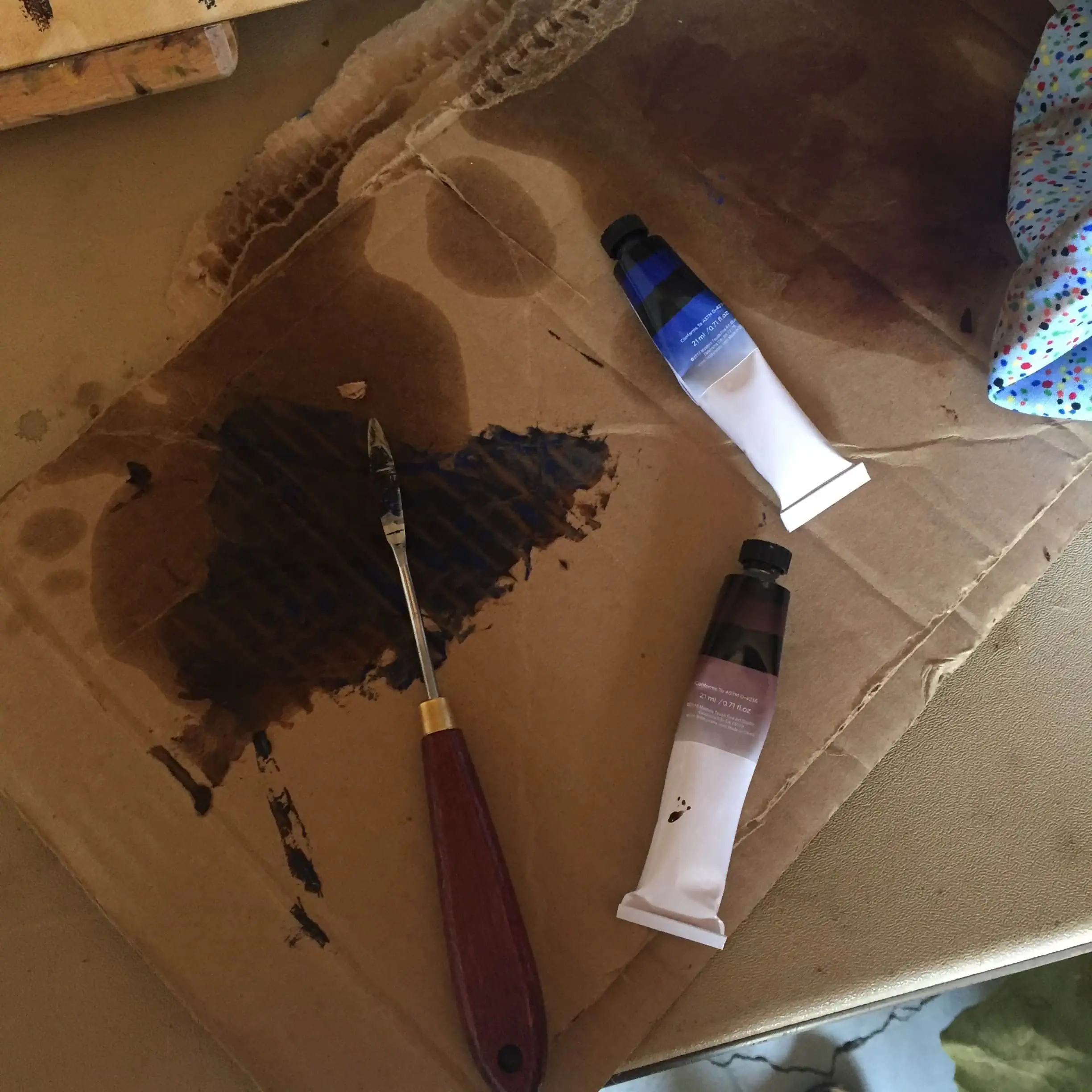
Family history is a huge part of your art. When did you make the connection between what you were doing as a family historian and your work as an artist?
A huge reason why I even started painting in the first place was because I love old photographs. And as I mentioned before, I didn’t have very many, I especially had very few photographs of my female ancestors. I wanted to see their faces so badly that I decided to paint them. Painting my ancestors and my family history also became a way for me to process difficult things in my childhood as well as difficult things I found in my family history.
What is one skill you wished you learned when you were younger?
I really wish I would have learned to trust myself more when I was younger. There were many negative stereotypes placed on my head as a child as to what I could or couldn’t do or who I could be. I heard people say “she is from a broken home” and didn’t want me playing with their kids. It is difficult to not internalize that. I wish I would have spent more time trusting myself that I had the power to do and be whatever I wanted. Luckily, I did trust my spirit and I’m grateful to where that trust in myself has gotten me.
What is a piece of advice that you have carried with you and who is it from? Do you have a mantra?
I am a huge Brene Brown fan. Her work on authenticity and shame has helped me to continue on and not give up on myself. In one of her books, she mentions the Theodore Roosevelt speech called “the man in the arena” and if I have a mantra it would be to “dare greatly.”
What books, movies, shows, or music are making you excited these days?
Well you probably can guess that I am a sucker for family history themed anything! A books I love is “Me and white supremacy” by Layla Saad. This book is about so many things that I’m passionate about such as combating Racism, changing the World, and becoming a Good Ancestor. I just watched a really funny and thought provoking movie called “American pickle” by Seth Rogan. The show I am obsessed with right now is Rutherford Falls on Peacock TV. This show is a game changer and is really helping to get the message across that there needs to be room for the family histories of all Americans.
What is your educational background and how has it shaped or changed your current career?
I am the first woman in my family to have the opportunity to go to college and receive a degree. It was something never really discussed or thought about because it seemed so impossible. I know that education is a gift. An art education is a gift and the ability to make and sell art is a huge privilege and I never want to forget that.
Is there a person who has been influential in your chosen career path?
Like much of the world, I am greatly influenced by Frida Kahlo. I remember seeing a portrait of her in an art class. She had a unibrow like mine and she was surrounded by plants and animals. I really saw myself reflected in that painting. Later, after my car accident, I thought of her often when the pain was too much to take. She really understood pain and loss. She understood what it means to “Nepantla.” Nepantla is the Indigenous Nahuatl word that describes what it feels like to be a Mexican American. The feeling of being in between your whole life and searching for your authenticity. When I found out that my ancestors lived only a few blocks from Casa Azul during the time Frida lived there, I was so excited and I really felt a connection to her work and herself as a person.
Have you ever made a big career switch? If so, what prompted that? Are there aspects of a prior career that you incorporate into what you do now?
I have been working since I was 15. I have had many jobs and I am very familiar with the concept of imposter syndrome and how it takes time to learn a new skill. You have to literally start somewhere. I think that knowledge and ability has served me well in the career I’m building today.
What is your workspace like? Has it changed at all since the beginning of the pandemic last year?
I began working in my unfinished basement and then we moved into a townhome with no basement. My kids currently share one bedroom so I can have 1 of our 3 bedrooms for my studio. It’s not ideal and quite cramped. The pandemic made it necessary for my husband to work from home as well and my studio became even smaller. As of now this is one of my biggest problems and a big problem for mother artists in general, finding space to create. I’ve had many people reach out and want to tour my studio and in the beginning I was embarrassed that I don’t have a studio like most professional artists but you have to start somewhere and this is where I’m starting. I currently don’t hold studio tours of my corner of the master bedroom but I am hoping to get to a point in my career where I can rent studio space outside of the home. This is my goal for 2021 as my lack of studio space is preventing me from working at this point.
Where do you find inspiration for new creations?
Much of my inspiration comes from my experiences in family history as well as a desire to see representation for people who look like me and families that look like mine.
What is the most challenging part of your work? How have you, or how do you, overcome those challenges?
As a mother of 3 young kids, finding time and mental energy to create is so difficult. And then you add in the pain from my spinal injury and it becomes very hard to get anything done. I have to constantly be reminding myself that I can go slow and it’s important that I make sure that I am surrounding myself with people who do not put pressure on me to do more than I can.
What are some stereotypes of your job that you wish to break?
As a daughter of an immigrant, there are a lot of stereotypes of what kind of professions we can have. The pressure to do well and have a job that is going to make money to provide for our families. Because of this, the profession as an artist is not one that is commonly sought after by first generation Americans. This is something I would like to break. We need the lens and the insights of immigrants, first generation Americans and BIPOC. We need all of that goodness in the arts. There is room for us here.
How do you deal with negativity, stress, and/or anxiety?
I am a huge fan of therapy and in a way it is also a way of doing family history. We all come with generational trauma and unresolved toxic coping mechanisms. This generation is probably one of the first generations that have had access to mental health care without stigma. We are the ones that are starting the healing process for generations of people who went through really difficult things.
What is your long-term goal? or What do you hope to accomplish within the next 10 years?
When you live with chronic pain, it’s sometimes difficult to look too far into the future. I hope I can continue to manage my pain. I hope I can sharpen my skills as an artist and share my lens and life experience with others. I hope in the next ten year there are many BIPOC artists who are successful and changing the world with their art.
Is there anything more you would like to “become?”
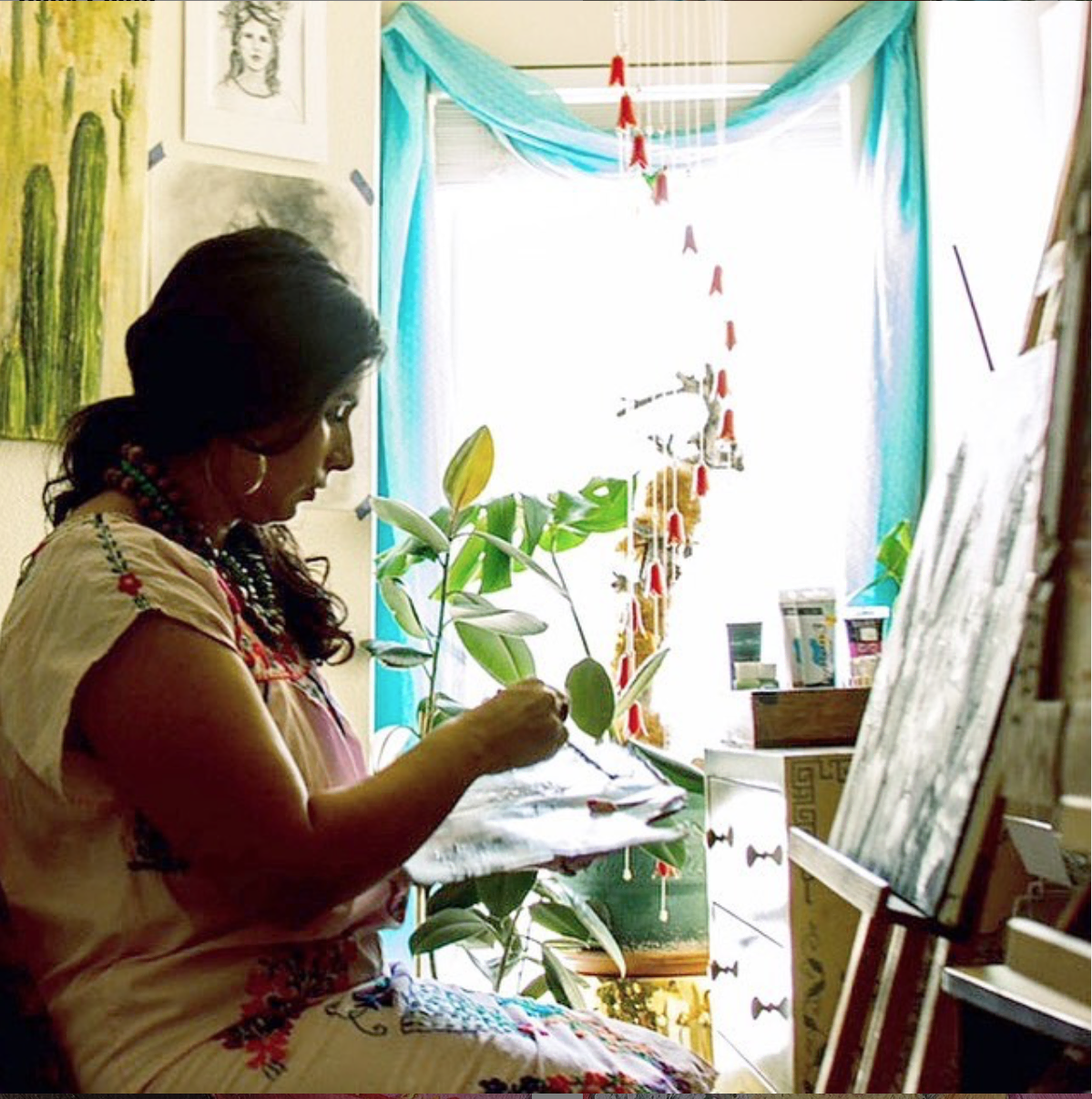
You can find more Becoming interviews here, and you can see our Cinco de Mayo feature of Michelle Franzoni Thorley here.



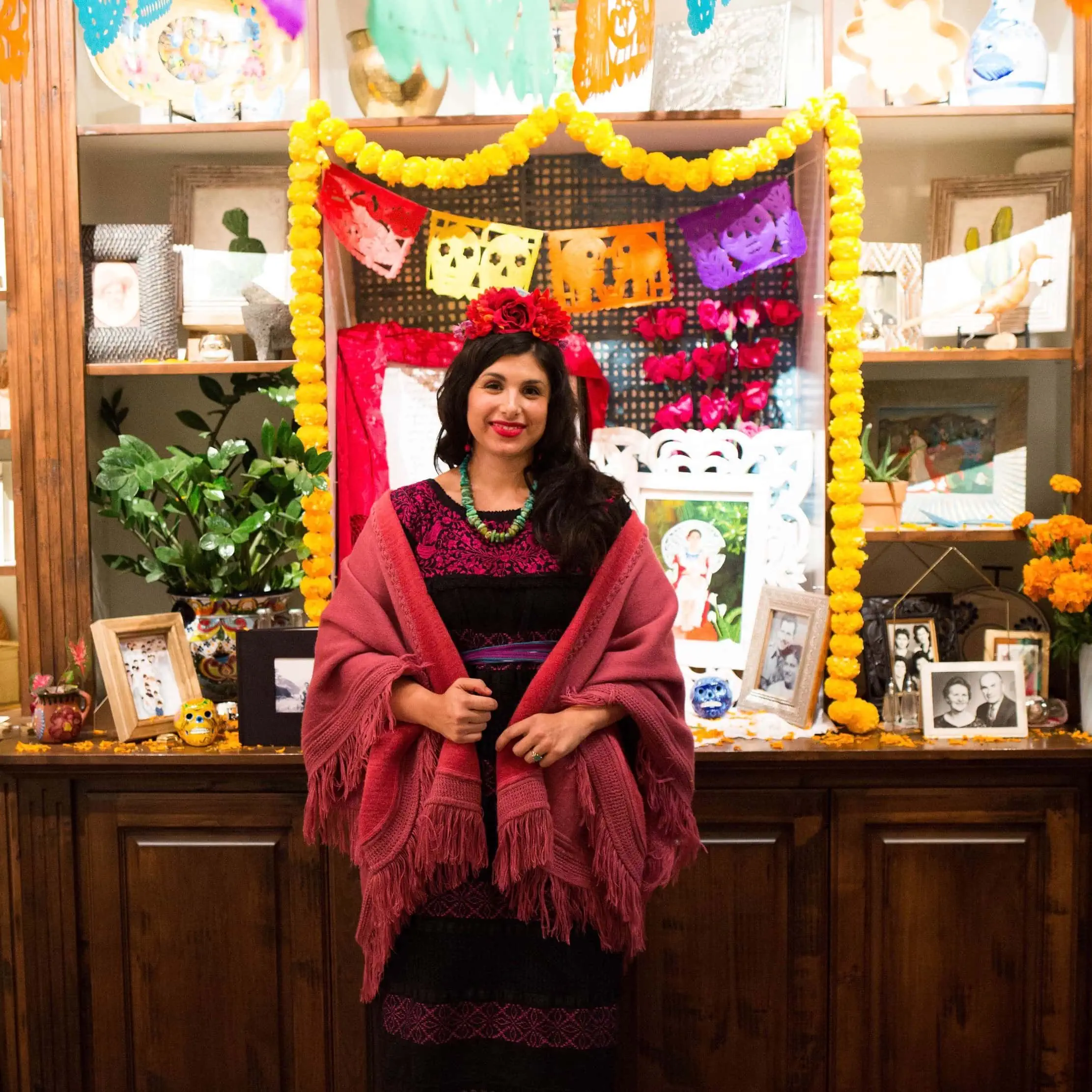
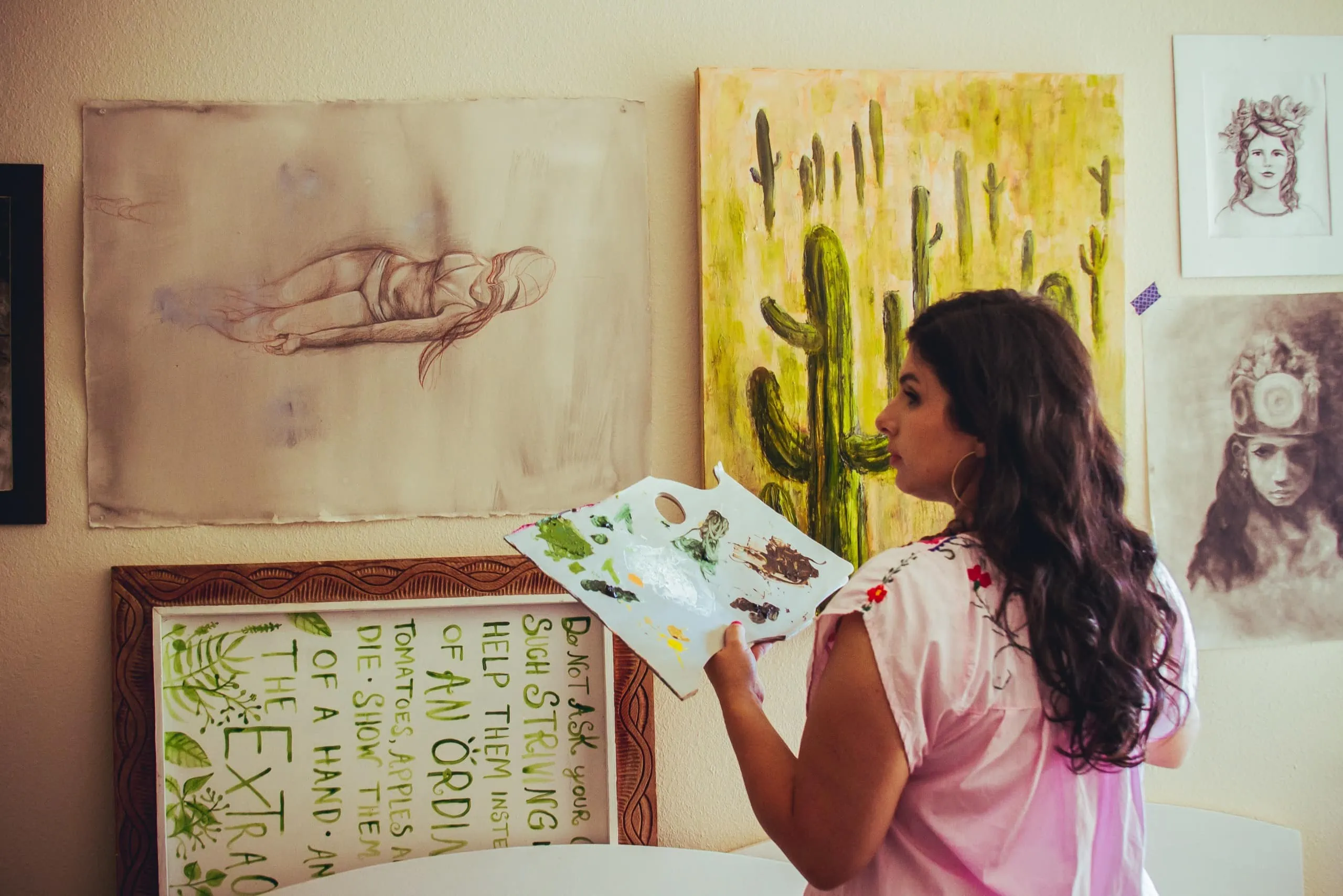
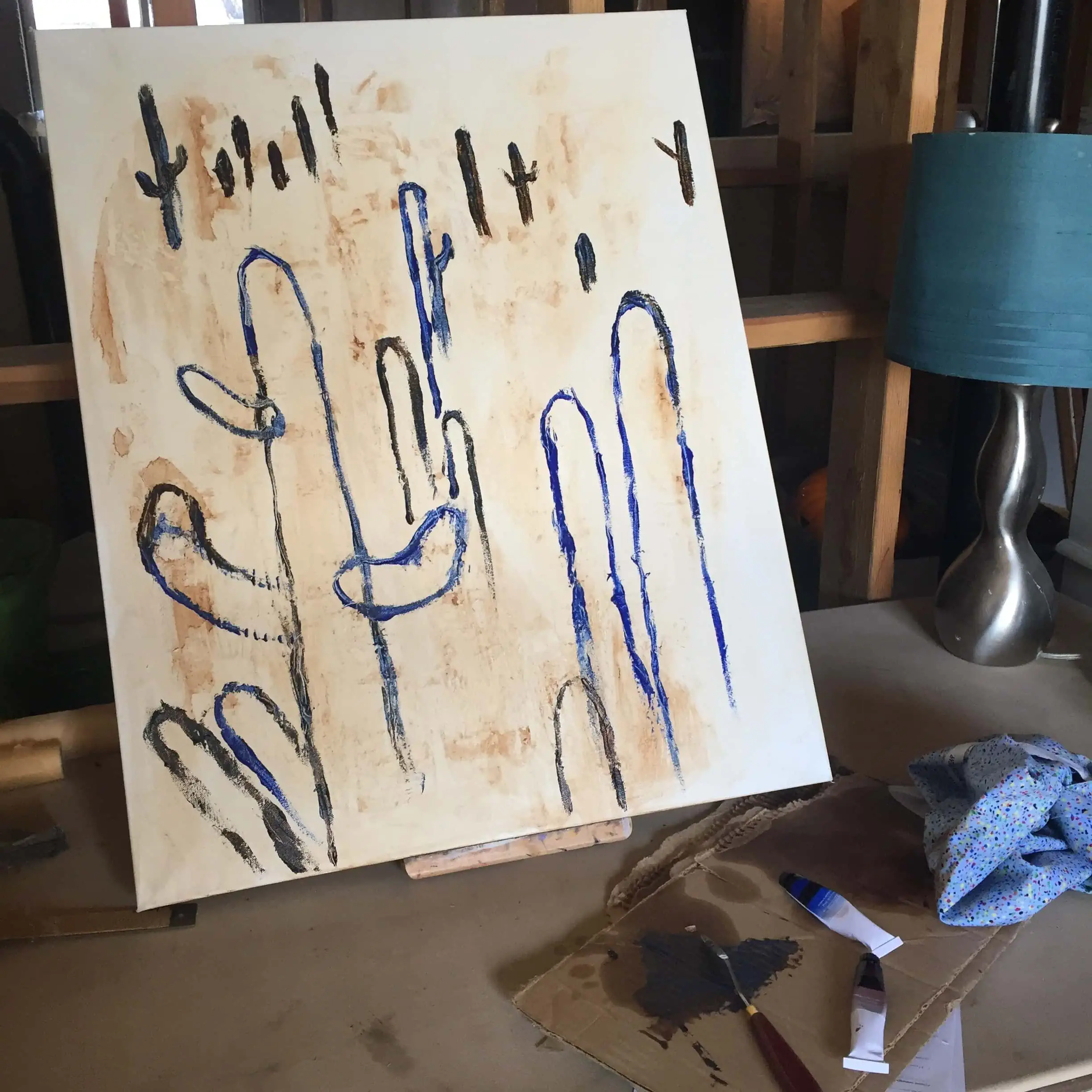
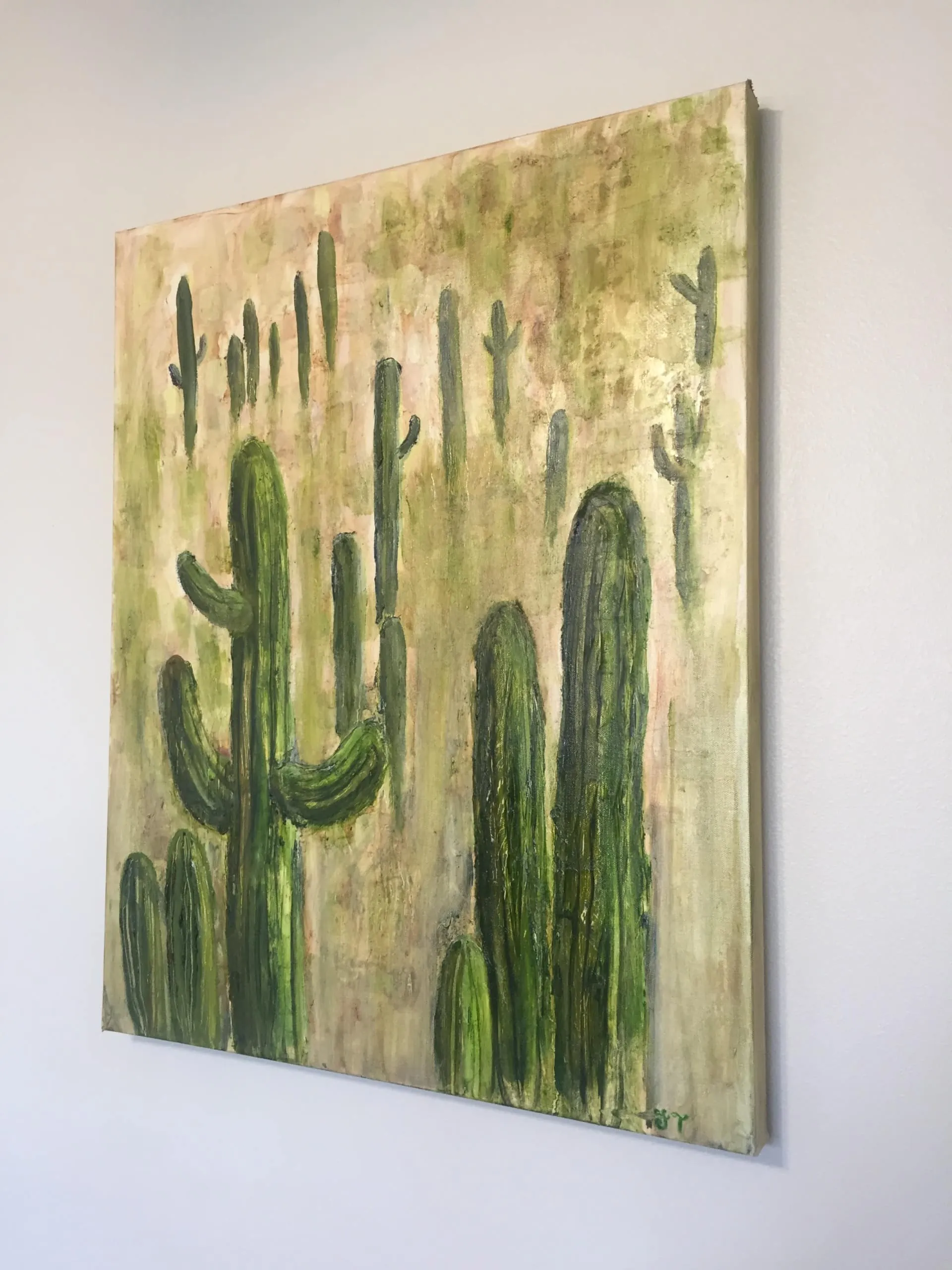
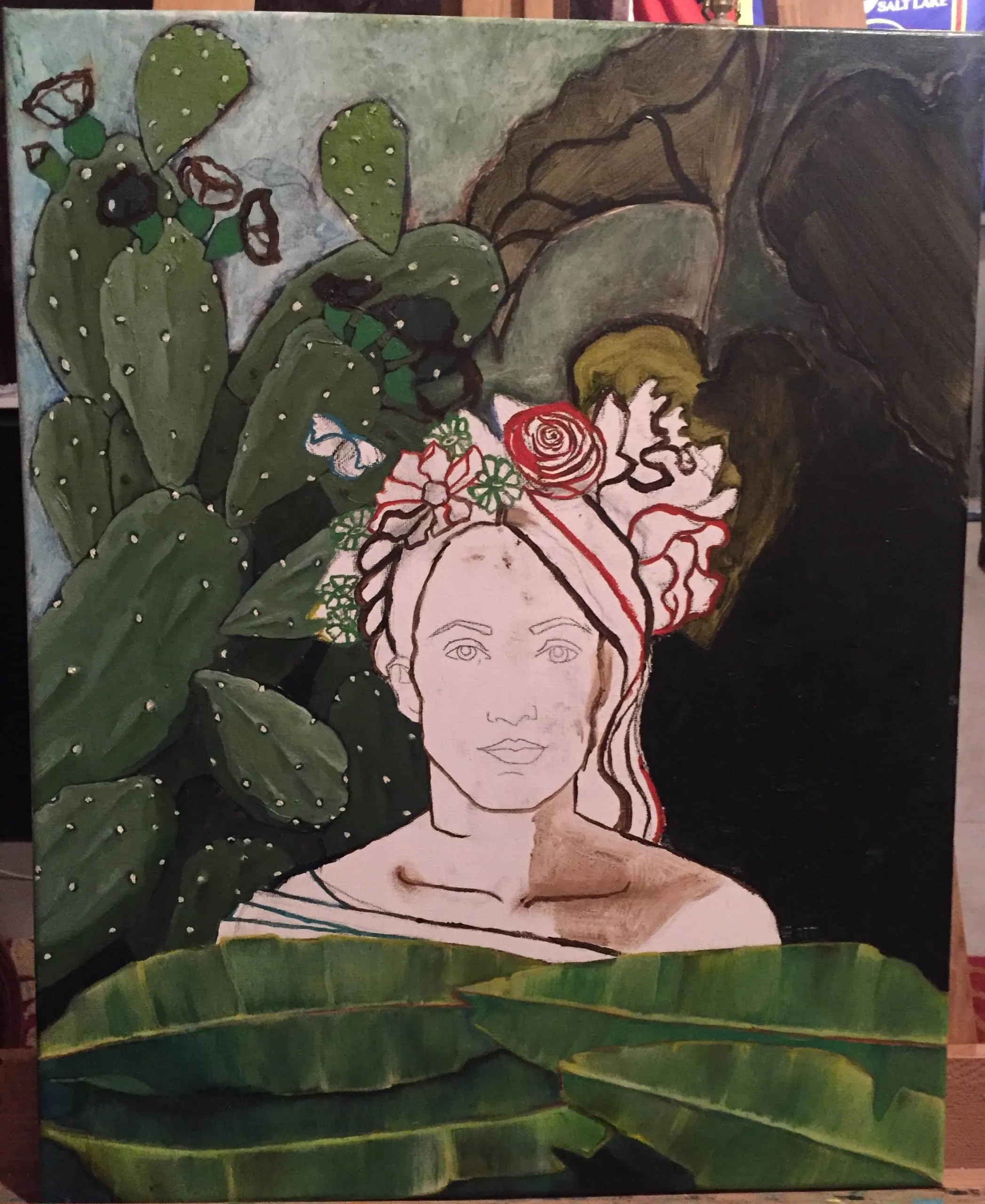
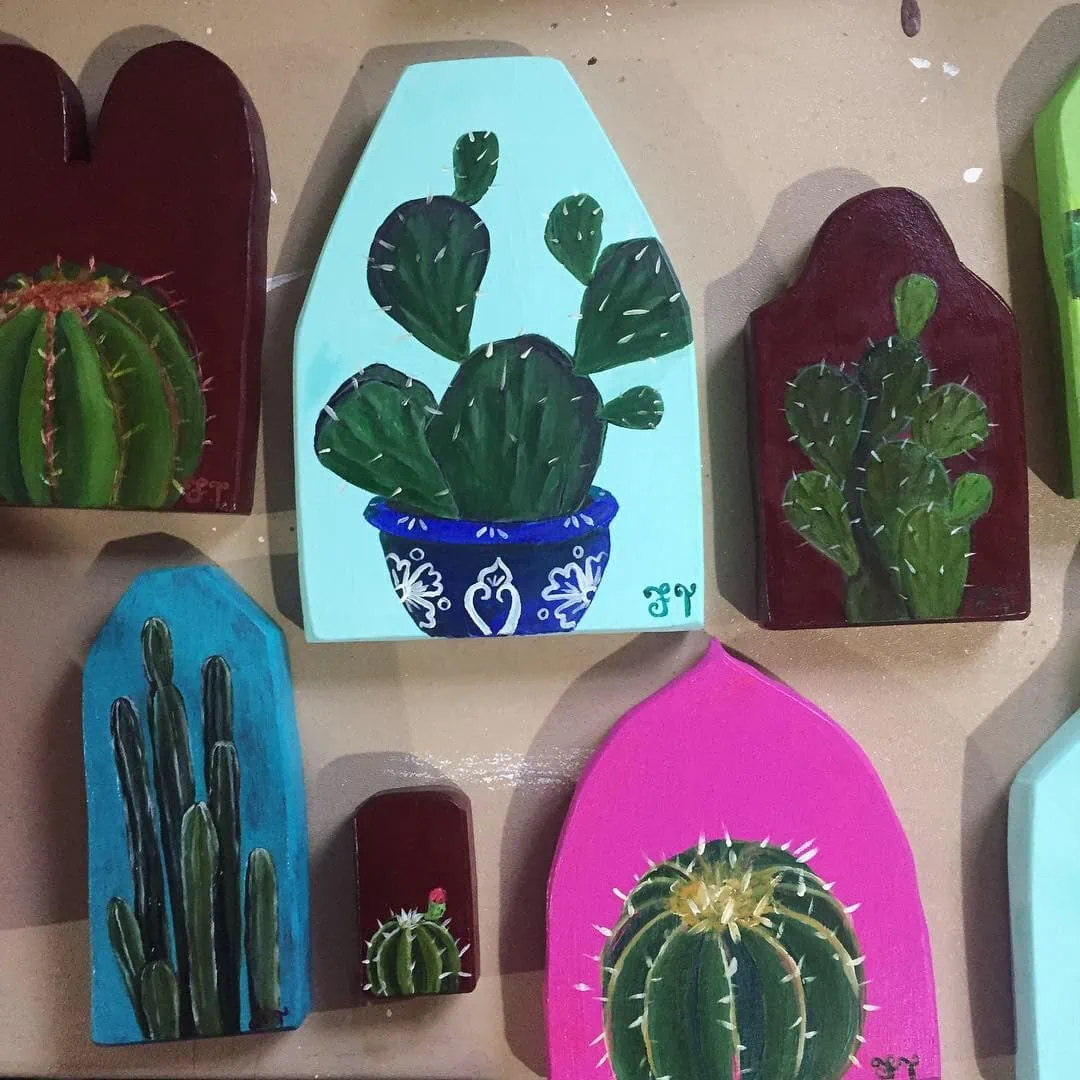
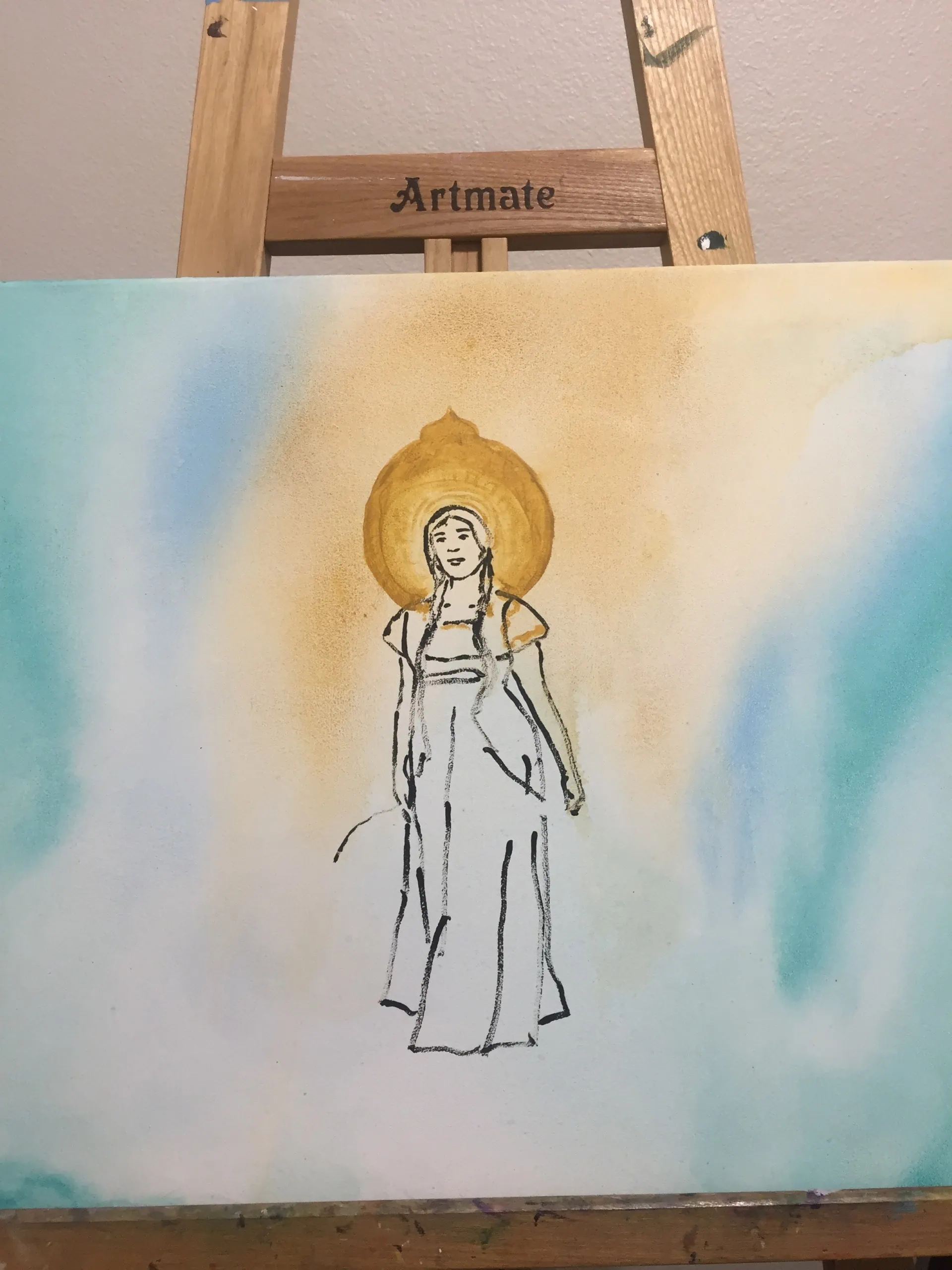
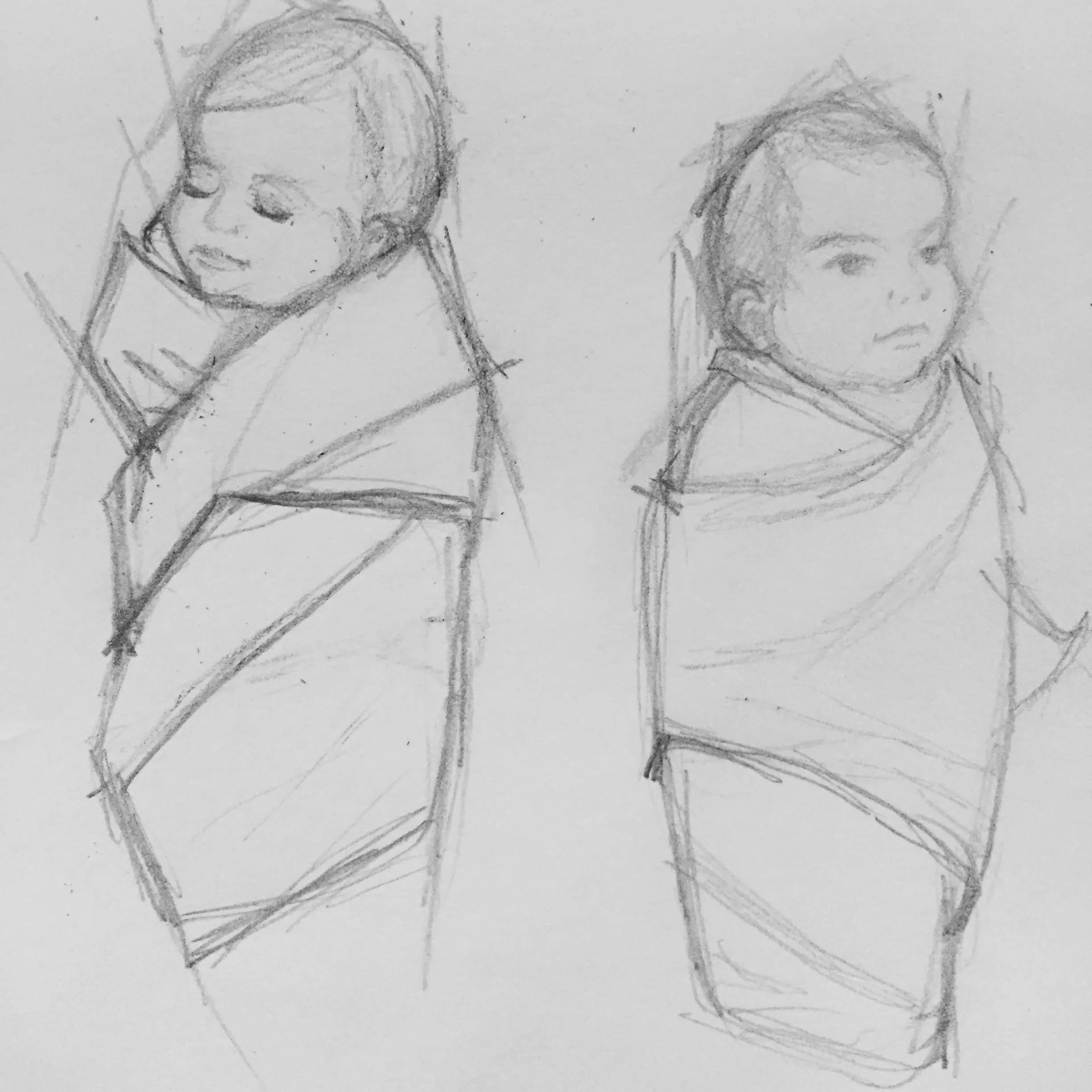

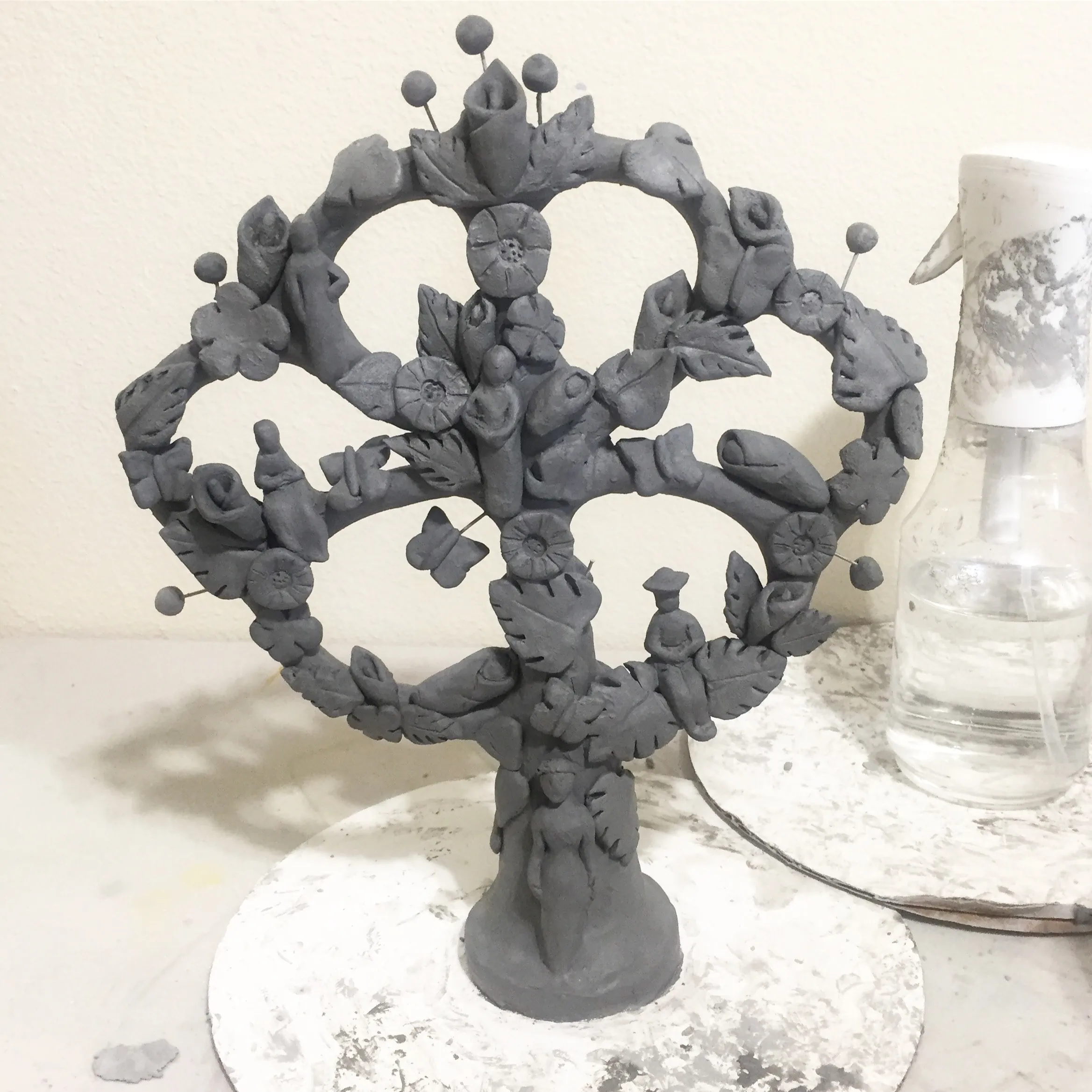
Comments